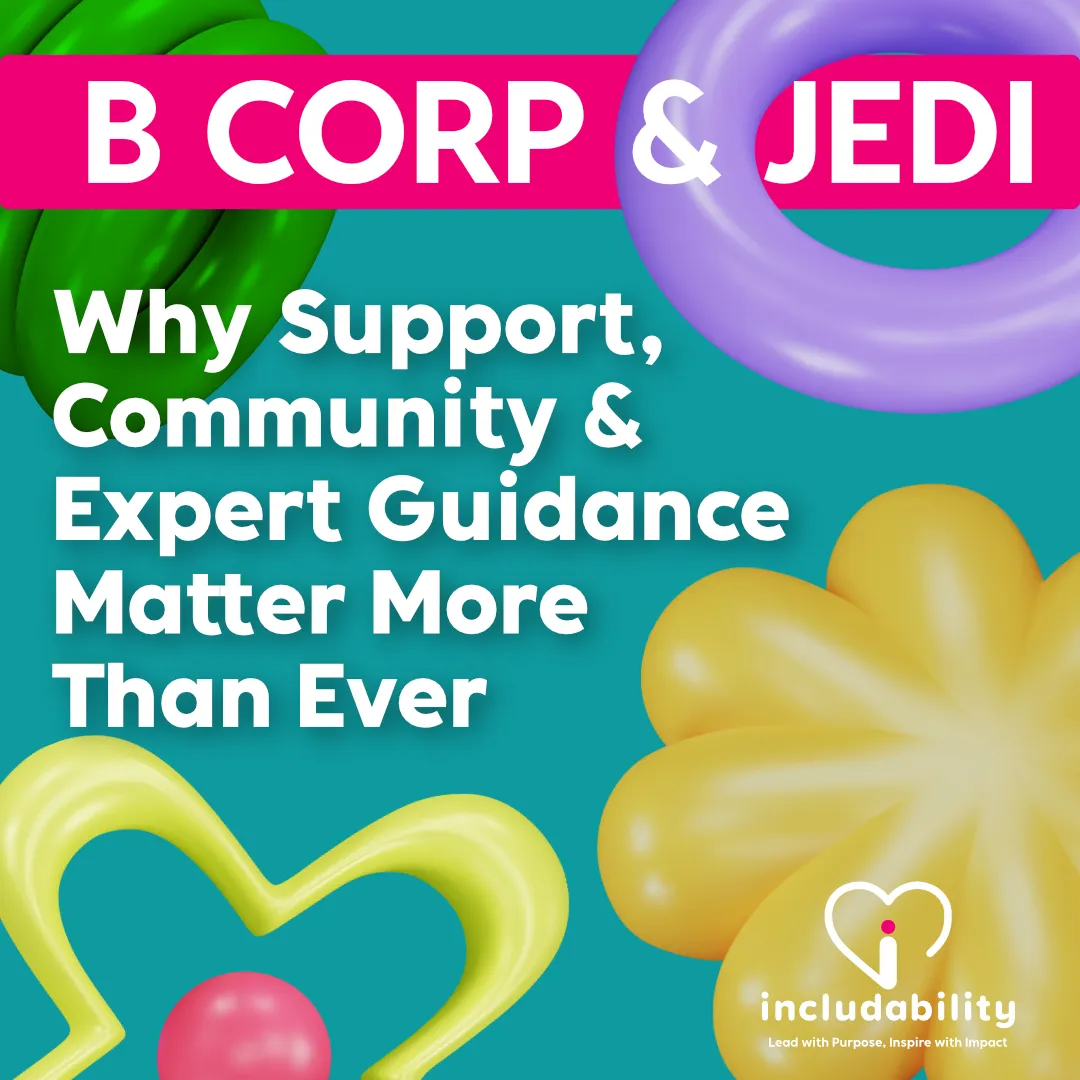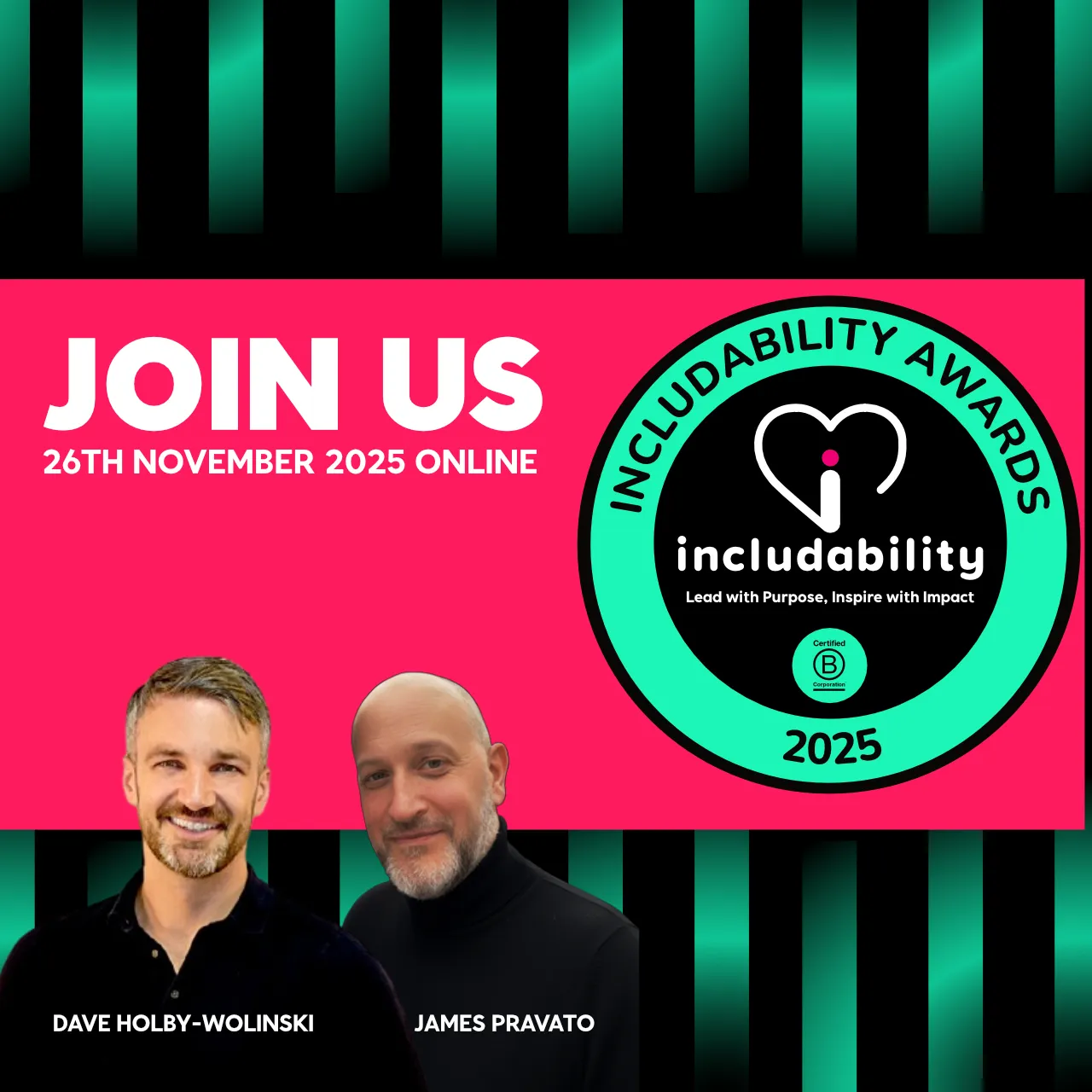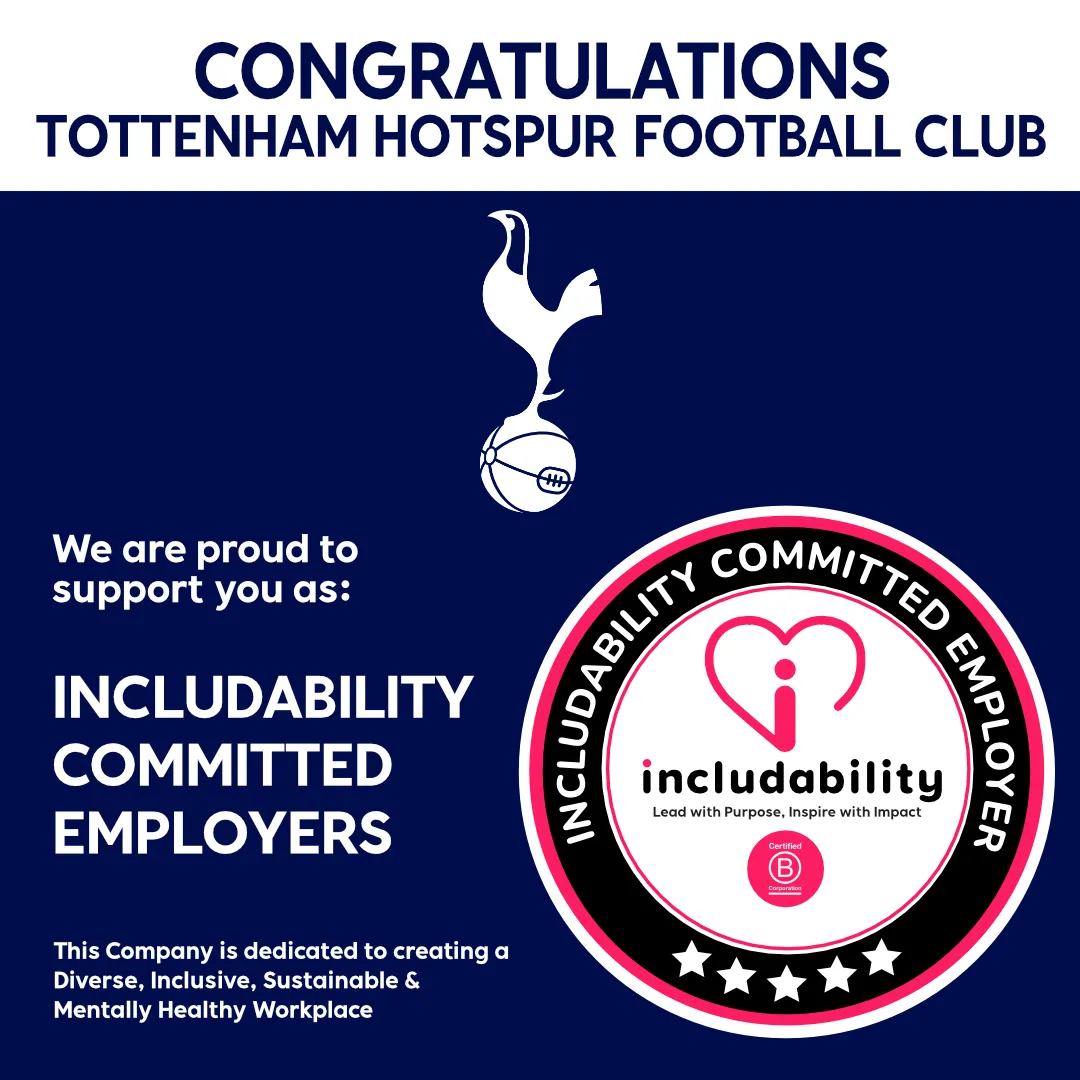Accessibility Strategies for National Inclusion Week 2024
National Inclusion Week 2024 is a time dedicated to celebrating diversity, promoting inclusion, and raising awareness about the importance of creating a more inclusive society. This blog is dedicated to the topics of Accessibility and Tackling Unconscious Bias.

A Handy Includability Spin Out Guide to Accessibility Strategies for National Inclusion Week 2024

National Inclusion Week 2024 is a time dedicated to celebrating diversity, promoting inclusion, and raising awareness about the importance of creating a more inclusive society.
We have a series of blogs this week to help guide you through everything you need to know about National Inclusion Week 2024, from its origins and significance to how our community can help your organisation make a lasting impact.
This blog is dedicated to the topics of Accessibility and Tackling Unconscious Bias.
See our main blog - What is National Inclusion Week? - to find out more about National Inclusion Week 2024 and further strategy topics.
What is Accessibility?
Accessibility refers to the design of products, environments, services, or systems that enable people of all abilities to fully engage and participate. It ensures that individuals with disabilities, including those with physical, sensory, cognitive, or other impairments, can access and benefit from the same resources and opportunities as others.
In the workplace, accessibility often includes accommodations like assistive technology, accessible digital platforms, and inclusive environments that promote equal participation, enhancing inclusion and engagement across all aspects of business operations.
What is Unconscious Bias?
Unconscious bias, also known as implicit bias, refers to the automatic, often unintentional judgments or stereotypes individuals form about others based on characteristics like race, gender, age, or disability. These biases are shaped by societal norms and personal experiences, influencing decision-making and interactions in ways that perpetuate inequality.
Unconscious bias can affect the workplace via recruitment processes, promotions, and team dynamics, creating barriers to true inclusion. Awareness and training on unconscious bias help individuals recognise and counteract these biases to foster a fairer, more equitable environment.
How can I make recruitment accessible?
Regular unconscious bias training is crucial in helping employees identify and mitigate prejudices. Kaye Moors from DRUM Studios suggests creating diverse leadership teams and using blind recruitment to combat bias.
“Making a lasting impact on inclusion requires businesses to go beyond surface-level initiatives and integrate inclusion deeply into their culture, practices, and values.
“Here are seven strategies businesses can adopt today to make an impact on inclusion this month and beyond:
“1. Ensure that leadership teams are diverse, reflecting different genders, ethnicities, abilities, and backgrounds. Diverse leadership drives inclusive decision-making.
“2. Regular training on unconscious bias can help employees recognise and counteract their biases.
“3. Ensure everyone in the organisation feels valued and heard. Create safe spaces for employees to share their experiences and concerns without fear of retaliation. This can be done through forums, surveys, or regular check-ins.
“4. Consider implementing blind recruitment practices where personal identifiers are removed from resumes to reduce bias.
“5. Recognise and celebrate cultural, religious, and other significant events of diverse groups. This fosters a sense of belonging and respect for differences.
“6. Design for All: Ensure that products and services are accessible and inclusive, considering the needs of people with disabilities, different cultures, and languages.
“7. Encourage employees to be allies for underrepresented groups, providing training on how to support colleagues effectively.”
Kaye Moors, MD at DRUM Studios
How can I improve accessibility for Deaf/HOH Employees?
When talking specifically about accessibility for deaf or hard of hearing (HOH) employees, Emm Sharpe of Study Sharpe stresses the value of investing in staff training, such as Deaf Awareness workshops and BSL courses, to enhance communication and accessibility for Deaf and HOH staff.
“Invest in good quality staff training – Deaf Awareness workshops and BSL courses. This will enable staff to be effectively ‘in the know’ in terms of their obligations to the BSL Act and Equality Act and support them to understand the needs and small changes we can ALL make to enable better communication, access and inclusion for Deaf/HOH employees/colleagues.”
Emm Sharpe, Founder of Study Sharpe
How can I improve accessibility for the Deaf Community?
Many businesses fail to provide sign language interpreters or video relay services, limiting Deaf employees’ participation. Sophie Kang of Sign Solutions stress the importance of offering Deaf awareness training and understanding communication strategies, like face-to-face engagement.
“One of the most overlooked inclusion topics is accessibility for the Deaf community. Many businesses fail to provide sign language interpreters for meetings, events, and training sessions. This can significantly hinder the participation and inclusion of Deaf employees. A lot of businesses do not have a video relay service (VRS) that provides a way for BSL users to connect with in their first or preferred language.
“Providing training for all employees on Deaf culture and communication strategies can foster a more inclusive environment. This includes basic sign language training and understanding the importance of clear, face-to-face communication.
“By addressing these areas, businesses can create a more inclusive environment for Deaf employees and ensure that they have equal opportunities to contribute and succeed.”
Sophie Kang – Sales & Marketing Manager at Sign Solutions
How can I impact Digital Accessibility?
When websites, software, or communication channels are inaccessible, businesses exclude disabled individuals from participating fully, inadvertently excluding those with different abilities. Kaye Moors emphasises digital accessibility as a crucial yet often ignored area.
“So many companies who pride themselves on their inclusion, do so inaccessibly. I have an IDEA that every business can ABIDE too and that is add the A to DEI and A to DEIB as without accessibility there is no diversity or inclusion.
“If your website, communication, software and internal procedures are inaccessible, you are saying that you are only supporting customers, employees and colleagues without disabilities and that in itself is ableism. At a time where a digital presence is paramount, and so much work is done online, the accessibility of websites, software and brand communication is not merely a matter of convenience, it is a fundamental aspect of inclusivity and equity.
“Failure to prioritise accessibility unfortunately actively discriminates against disabled individuals, hindering their ability to engage fully in the digital landscape.
“As we progress into 2024 and beyond, it is paramount that all companies recognise their social responsibility and take proactive measures to ensure their platforms are accessible to all, thereby fostering a more inclusive and equitable online environment for everyone.”
Kaye Moors, MD of DRUM Studios
How Includability can help your organisation during National Inclusion Week?
Includability is your essential partner in promoting accessibility within your organisation. During National Inclusion Week, we provide a wide range of resources, including expert-led workshops and training on accessible workplace practices, digital accessibility tools, and disability inclusion strategies. Our dedicated Accessibility Partners are here to guide you in ensuring that your workplace is welcoming and accessible to all employees, regardless of their abilities.
Join Includability today and take the first step towards creating a more inclusive, diverse, and accessible workplace.
https://www.weareincludability.co.uk/membership/membership
Contact us to learn how we can support your organisation during National Inclusion Week and beyond. dave@Includability.co.uk
Are there more blogs in the National Inclusion Week 2024 series?
Read our spin-out blogs for this guide.
What is National Inclusion Week?
Neurodiversity Inclusion in the Workplace
How to develop EDI Policy Strategies
Related resources & events
Sign up for our newsletters
We have an employer and Job seeker newsletter giving you all the latest information in one easy and digestible email. Sign up today for news and job advice straight to your inbox.











